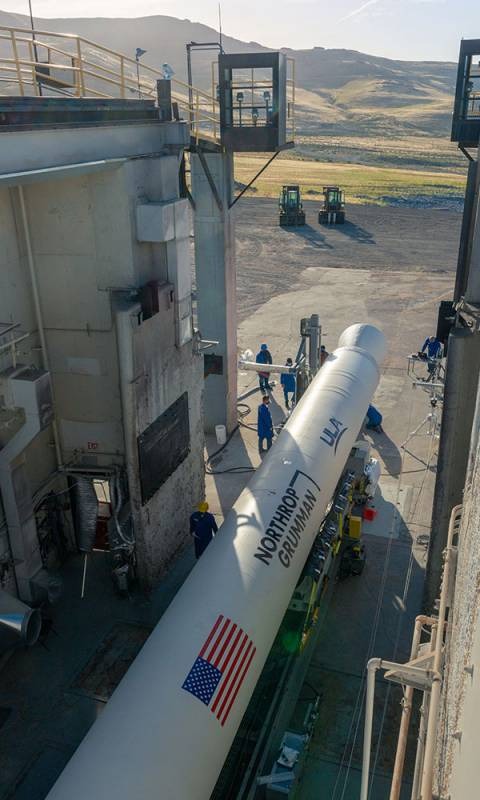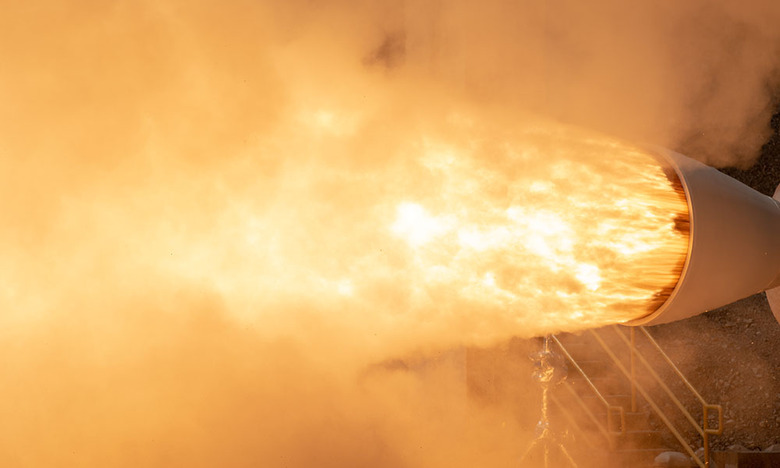The Huge Rocket For The ULA Vulcan Just Passed A Fiery Milestone
The new rocket motor for the huge ULA Vulcan is one step closer to launching into space, with Northrop Grumman successfully putting one of the beastly motors through its paces this week. The ground test of the extended length 63-inch-diameter Graphite Epoxy Motor, known as GEM 63XL, is a key milestone on the way to giving the rocket its next-generation engines.
The United Launch Alliance Vulcan Centaur launch vehicle is expected to blast off in 2021 for the first time, using a number of GEM 63XL solid rocket boosters. Before that, though, the motor is expected to be used on an Atlas V launch vehicle in Q4 2020.

Before it can get anywhere near a launch pad, never mind space, though, Northrop Grumman's motor needs to pass a battery of tests. The QM-1 static test saw it fire for around 90 seconds, during which time it produced almost 449,000 pounds of thrust. Among the criteria being judged were how well the internal insulation of the motor held up, in a cold-conditioned environment of 40 degrees Fahrenheit.
It also gave the company an opportunity to measure ballistic performance data from the rocket, along with how the nozzle holds up. That includes how much ablation erosion was encountered during the firing, and how the nozzle plug performed. Finally, Northrop Grumman was looking at igniter insulator performance.
Luckily for the company, the results were all good. "The GEM 63XL increases thrust and performance by 15-20 percent compared to a standard GEM 63," Charlie Precourt, vice president of propulsion systems at Northrop Grumman, said in a statement. The GEM 63 is rated for almost 374,000 pounds of thrust.

With the Qualify test under its belt, next up is the Validate (VM-1) test. That will be a second static test, this time at 90 degrees Fahrenheit. It'll be designed to shake down the risk mitigation criteria for the US Air Force.
The advantages for the GEM 63XL are more than just a boost in thrust. They're expected to be almost half the cost of the current AJ-60A boosters that are used on the Atlas V, a big consideration as cost-effectiveness and value for future space missions is assessed.
